‘Microscopic to 10m high’: Whole ecosystem restoration breeds hope for giant kelp forests
In a fight to save giant kelp forests, a restoration project is breeding hope after pioneering methods that grow infant kelps to 10m high in less than a year. And it involves underwater gardening.

Tasmania
Don't miss out on the headlines from Tasmania. Followed categories will be added to My News.
Scientists working to restore Tasmania’s threatened giant kelp forests have hit upon astounding early results, with these underwater gardeners growing kelp from its infancy up to 10m-tall in less than a year.
The rapid growth of the kelp plants, once transferred from the laboratory out to a natural reef, has surprised University of Tasmania’s Institute of Marine and Antarctic Studies reef ecology Associate Professor Scott Ling.
“I first learned to dive among giant kelp forests a couple decades ago and we weren’t expecting how quickly the whole thing could be lost. Equally, we weren’t anticipating that we can regrow these things so quickly either,” Professor Ling said.
While giant kelp is widespread around the coast, it’s the giant kelp forests that have been threatened to the point of endangerment because of climate change and predators.
The East Australian Current is pushing warmer, nutrient-poor waters south, bringing along invasive species such as the long-spined sea urchin which can cause giant kelp beds to collapse when the species occur in large numbers.
There are more than 20 million long-spined sea urchins off the coast of mainland Tasmania.
But there is hope.
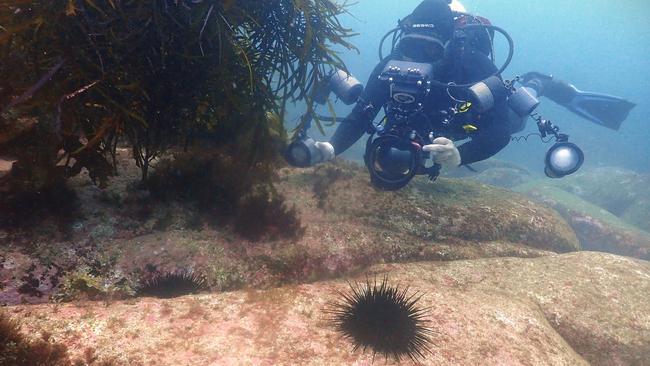
It’s one of the reasons why scientists are focusing on the approach of whole ecosystem restoration to regenerate giant kelp forests.
Eaglehawk Dive Centre’s Mick Baron and Karen Gowlett-Holmes started growing kelp fronds on bricks after witnessing the giant kelp forests vanish when a marine heatwave hit in 2016.
In 2020, they began collaborating with IMAS researchers to pioneer methods for giant kelp restoration.
And it involves underwater gardening: clearing out seaweeds and sea urchins.
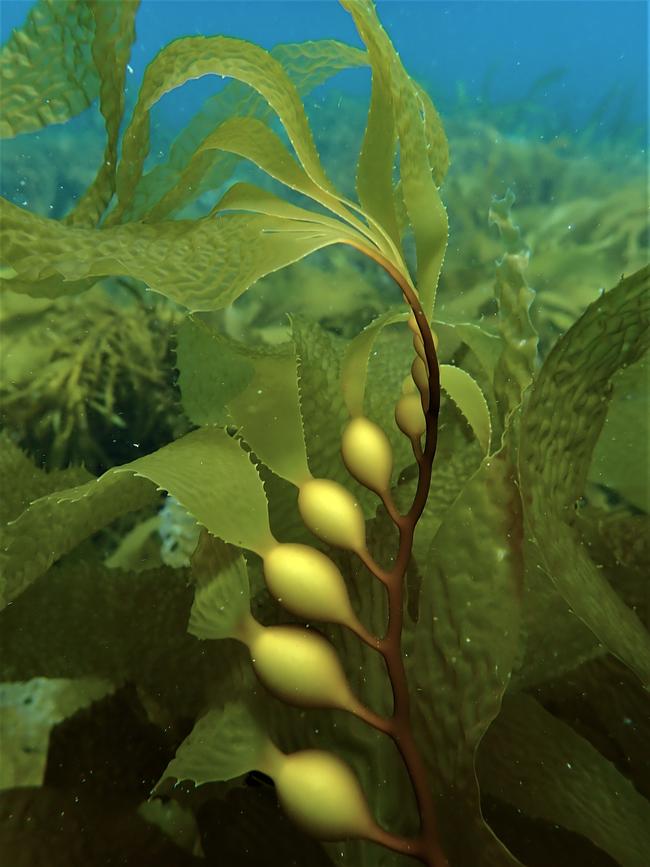

“We go out and we collect the mature fronds, they grow around the base of the kelp,” Prof Ling said.
“We harvest the reproductive fronds from those kelp and then we propagate them in the lab and grow them up on twine … we then seed them back to the reef.
“Over the past four years we’re run five experiments where we’ve trialled different ways of seeding to the reef. What we’ve found is we need to seed open patches of reef where there is enough sunlight getting to the sea floor where the little seedlings can actually thrive.”
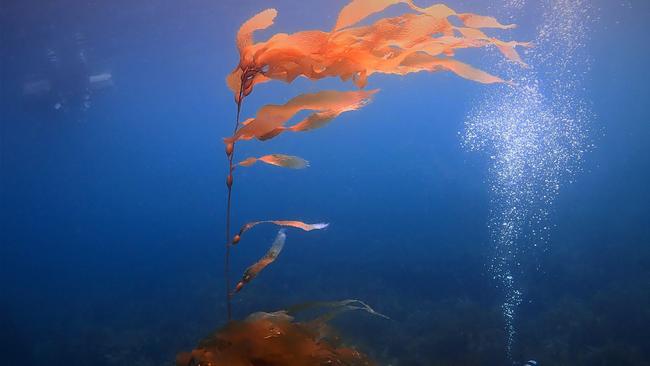
With support from the Sea Forest Foundation and The Nature Conservancy, Prof Ling and the rest of the team have grown giant kelp from its infancy to 10m-tall column in less than a year.
“We can get these kelps from a tiny microscopic stage to over 10m tall in 10 months. I can’t think of another species where you can get so much instant satisfaction from a restoration effort as you can get with giant kelp,” Prof Ling said.
“One of the really exciting things is there’s a patch of kelp that we’ve regrown, and that kelp has been on the surface for almost 18 months – they’re over two years old and they’ve become reproductive themselves, starting to self-seed the patches of reef.
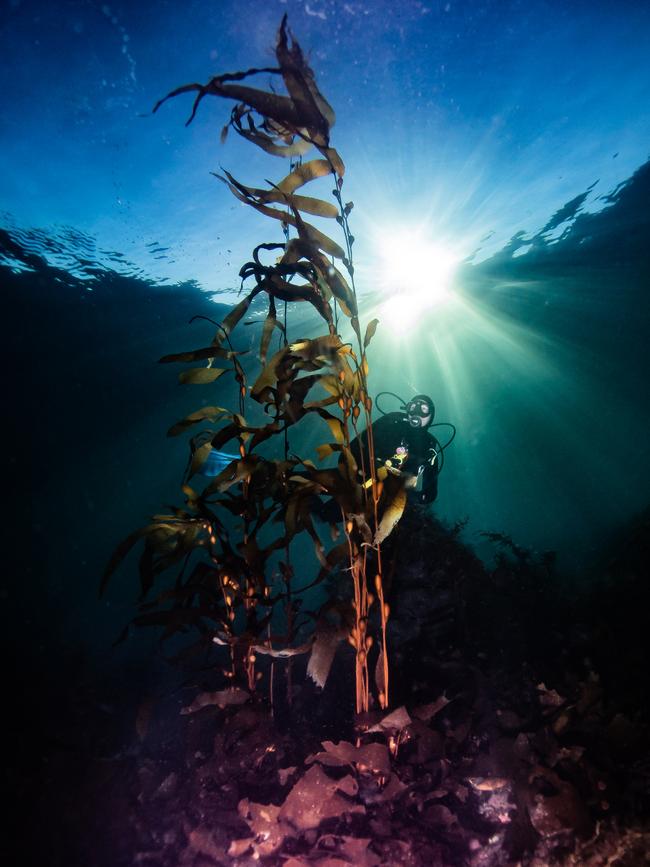
“We’re starting to see early signs of local increase in secondary production – this is all the production of the animals that associate with the giant kelp. For example, we know giant kelp can be a great settlement habitat for juvenile rock lobsters.”
While there is hope for the future, Prof Ling said marine heatwaves this summer will be an interesting experiment to see how resilient the kelp will be.
“We’re having a really warm summer so far, it’s going to be very informative as to those parts of the coast where these kelps can persist through the current marine heatwave conditions,” he said.
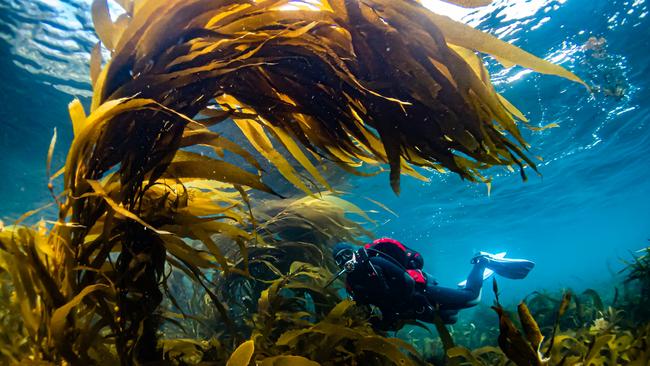
“We’ve got some real challenges ahead with warming, but by seeding from remnant kelps on the coast that have survived past heatwaves, we can recover these things quickly, so hopefully enough survive through this summer.
“With these restoration projects, we are able to increase the local resilience and improve the conditions for giant kelp forests.”
Mr Baron said his business is having discussions with collaborators about starting an introduction to underwater planting course, to get the community involved with underwater gardening.
“To re-establish something, with a lot of hurdles involved, something that’s grown from nothing is quite amazing,” he said.
“There is a generation out there now that really wants to have a crack at it.”
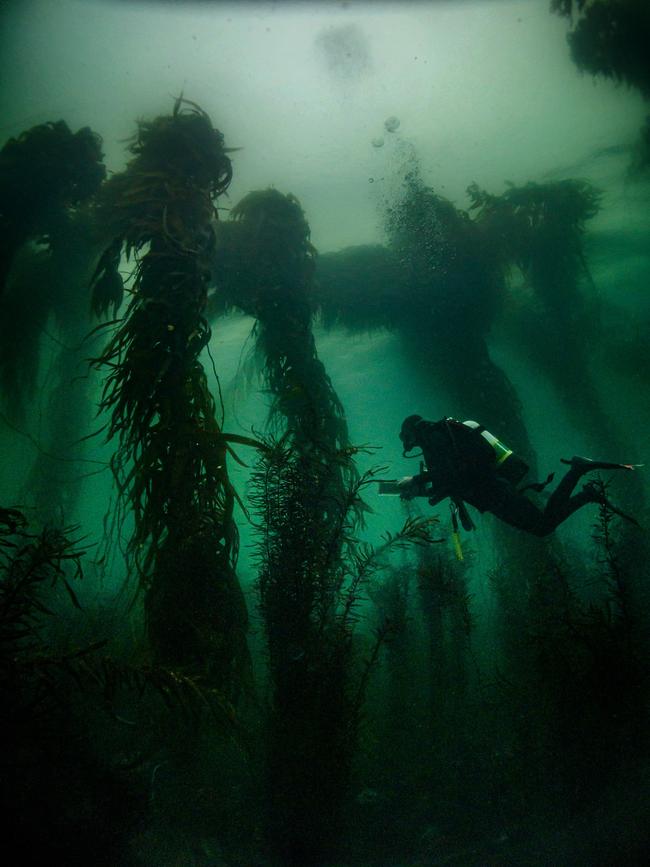
Wilderness skipper wants son to see giant kelp forests, just like he did
After spending his whole life in the waters of Eaglehawk Neck, Tim Cunningham has witnessed the loss of giant kelp forests.
“Kelp wasn’t something on my mind that we’ll ever have to worry about not being there, just the same as the trees on the land, it was part of the landscape,” the 35-year-old said.
While fishing on the edge of the kelp forest as a kid, Mr Cunningham said he can remember it being so thick, his Dad’s fishing boat couldn’t get through it.
“What stands out in my memory is the vastness of it,” he said. “In some areas it would stretch out further than what you could see. It was thick as thick, you literally couldn’t get a boat through it.”
But when Mr Cunningham became a skipper for Pennicott Wilderness Journeys, he watched kelp forests become “thinner”.
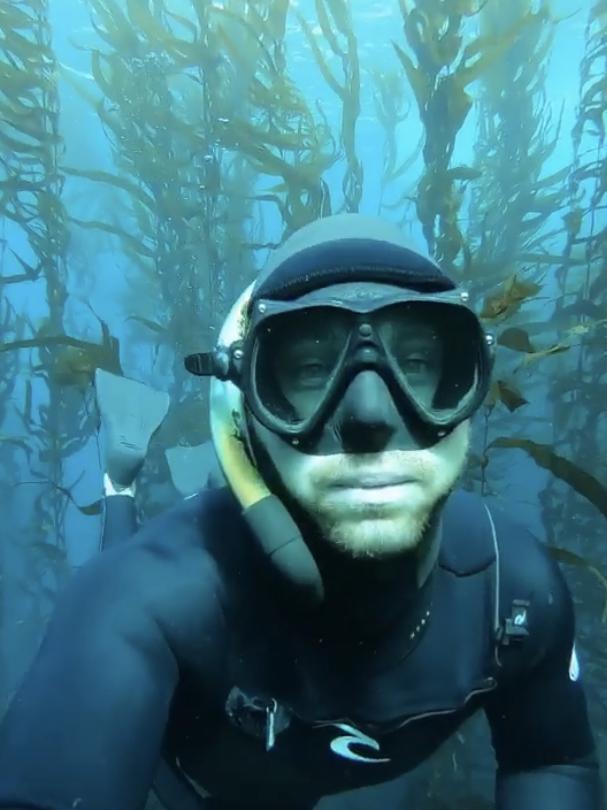
“Through my childhood, it was just never an issue that was there and then I started working as the skipper and I started to notice it was thinning out,” he said.
With warmer waters flowing further south from the East Australian Current, also bringing along invasive species like invasive long spined sea urchin, Tasmania’s giant kelp forests have been disappearing.
But a new collaborative restoration project between Eaglehawk Dive Centre and the Institute of Marine and Antarctic Studies has given Mr Cunningham hope that his young son will witness what he did as a kid.
“There’s a lot of hope for this project to develop kelp, especially for the next generation to see what we were lucky enough to see,” he said.
“I’ve snorkelled in these areas to see it and have been amazed. It gives me hope for the future.”
More Coverage
Originally published as ‘Microscopic to 10m high’: Whole ecosystem restoration breeds hope for giant kelp forests




